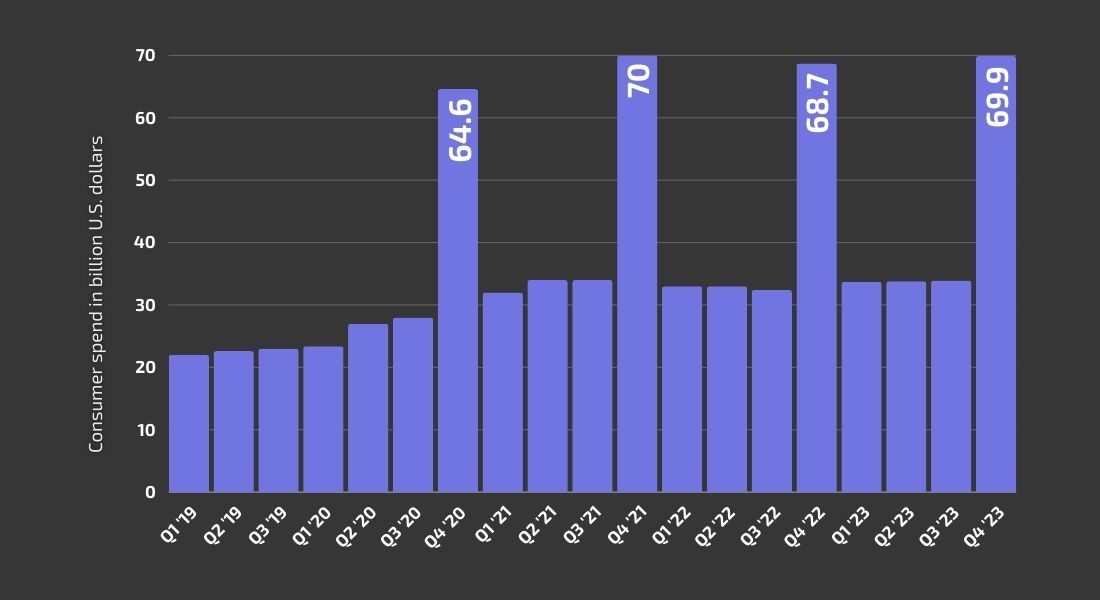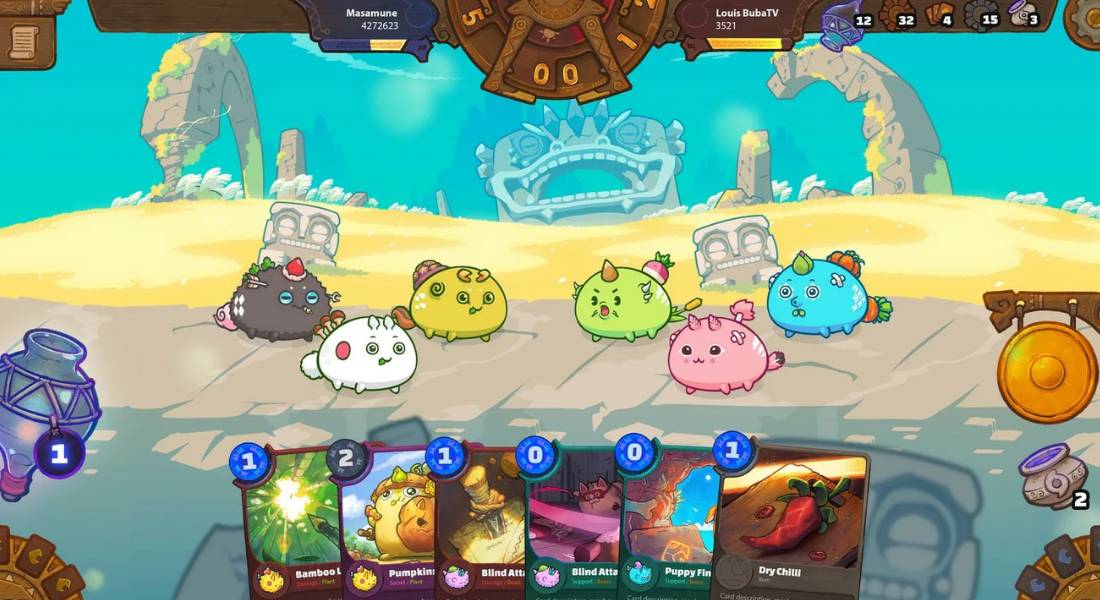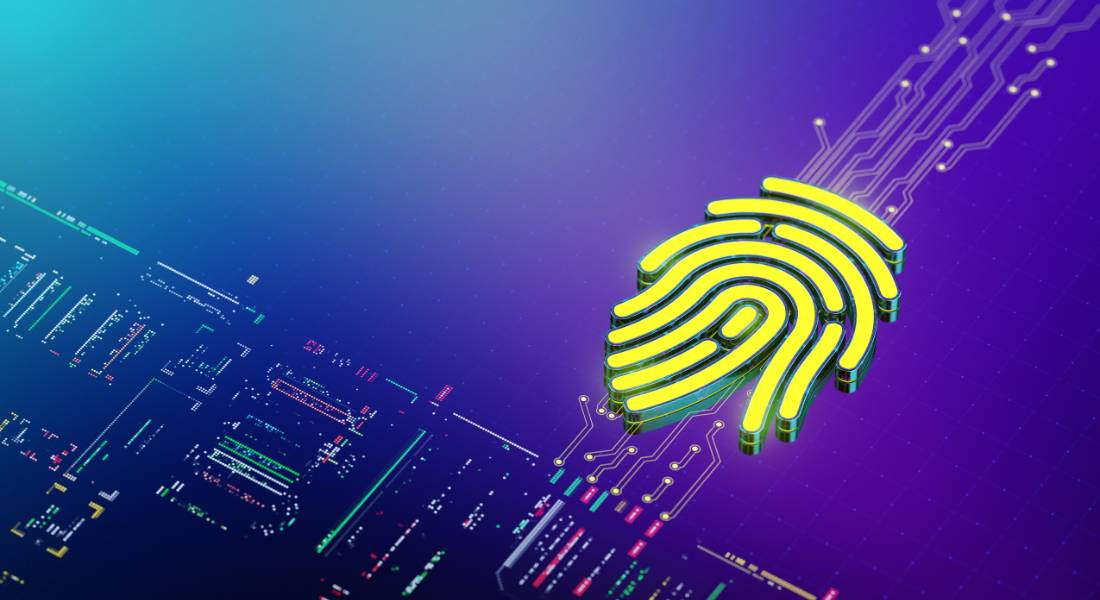At the end of January Datareportal prepared its annual Digital 2024: Global Overview Report, which noted that the number of unique mobile phone users at the beginning of 2024 will be 5.61 billion. The latest data from GSMA Intelligence shows that 69.4% of the world’s population now uses mobile devices, and the total number of users worldwide has grown by 138 million (+2.5 percent) since the start of 2023.
However, in the last quarter of 2023, the total value of global consumer spending on mobile apps was $70 billion, an increase of almost 2% year over year.
Mobile App Development market – main trends
In 2023, total consumer spending on mobile apps was approximately $171 billion, according to Statista.

Mobile apps are projected to generate more than $613 billion revenue in 2025, with mobile games accounting for the largest share of revenue among all app categories. Note that in 2020, games and videos accounted for the largest share of the mobile content market for the year.
The ePublishing and education sectors continue to experience stagnation in mobile content despite the rise in app usage, which is caused by COVID-19 disrupting the normal functioning of the education system.
In recent years, the increase in global consumer spending on apps has proven that users are highly interested in premium services and paid content in apps.
Android consumers spent on average $5.31 on mobile apps in the second quarter of 2021.
As of September 2021, the number of paid apps has dropped to only 6% and 4% of the total in the Apple App Store and Google Play Store, respectively.
In comparison, apps that offer subscription plans are becoming increasingly popular. In 2020, the top subscription apps in the Apple App Store generated more than $10 million in global revenue.
What is blockchain in simple words
Blockchain is a way of organizing data while information is stored in blocks and a chain (hence the name “blockchain”) that are distributed across many computers. Each block contains information about transactions or other data, as well as a link to the previous block, creating an unbroken chain.
This data cannot be changed without the consent of the majority of network participants, which makes blockchain technology a reliable way to transfer information.
The main theme of blockchain apps is cryptocurrencies such as Bitcoin and Ether (there are many of them), where the blockchain is used to ensure the safety and reliability of transactions.
But it is also used for supply chain management, because blockchain allows tracking the movement of goods from producer to consumer, while in the financial industry – to improve processes for registering securities, making international payments and managing risks, and blockchain also helps ensure secure management and exchange of data between IoT devices, eliminating security and privacy concerns.
- Cryptocurrency wallets (e-wallets) are mobile applications that allow users to manage their digital assets and make cryptocurrency transactions directly from their mobile devices.
Popular crypto wallets – Binance, Electrum, MyEtherWallet (MEW), Coinbase, SafePal. - Integration of cryptocurrencies payment in mobile games – Blockchain is often used to exchange or purchase in-game currencies, items, etc. Axie Infinity, Decentraland, Gods Unchained are examples of games (virtual worlds) with a trading cryptocurrency economy, and payment with cryptocurrency is integrated in many other games that are not directly connected to Ethereum.

- Decentralized Applications (DApps) – DApps can use blockchain to execute smart contracts, providing automation and authentication of transactions without having to trust centralized servers to do so.
- In-app rewards – Mobile apps use blockchain to implement micropayments and reward systems for users, stimulating their activity and engagement.
- User data management – Blockchain is used to store users’ personal data, providing control over access to their information and preventing its unauthorized use.
What are the advantages of no-code development?
No-code development is a software development methodology that allows you to develop apps without the need to manually write code. Instead, developers use graphical interfaces, drag-and-drop and configuration tools, and a set of predefined modules and components.
No-code development can be useful for quickly creating prototypes, developing an MVP (minimum viable product), and also for creating simple apps without the need for deep programming knowledge.
Basically, with the help of know-code development they implement:
- User interfaces (Figma, Webflow, Adobe XD, Sketch);
- Application logic (Zapier, Microsoft Flow);
- Integration with external services (Zapier, Integromat, Automate.io);
- DApps (Etherlime, BlockVigil, EtherScripter, Scaffold-eth);
- Testing and deployment (TestCraft, Applitools, OutSystems).
Cross-platform mobile development
Cross-platform development is the process of creating software that can run on multiple platforms or operating systems without the need to develop separate versions for each of them.
It allows developers to create apps that can run on both iOS and Android, PCs (Windows, macOS, Linux) as well as web browsers using shared code or development tools.
Cross-platform development has gained popularity by reducing development time and costs, reaching a wider audience, and simplifying the process of maintaining and updating applications across multiple platforms.
Examples of popular cross-platform apps
- Instagram and Spotify are available for both iOS and Android. The application is created using the cross-platform React Native framework.
- The Google Ads mobile application, designed to manage advertising campaigns, was developed using Flutter. It is available for both iOS and Android devices.
- More narrowly known applications developed using Xamarin are UPS Mobile, BBC Good Food, Alaska Airlines.
Biometrics in mobile apps

Biometric authentication is a method of using a user’s biometric data, such as fingerprints, facial recognition, retinal scans or voice scans, to verify their identity and allow access to an application or its functionality.
The advantages of biometric authentication in mobile applications are ease of use, high level of security and no need to remember or enter passwords.
Growth of popularity of biometric authentication is associated with the popularization of mobile payments and the use of financial applications. Also, more and more users are witnessing data leaks, so they tend to use all development achievements to ensure their privacy.
iBeacon technology for business
Beacon technology in mobile development is a way to determine the location of a user’s device in real time using Bluetooth signals. Beacons are small devices that send Bluetooth signals with a unique identifier to a specific radius. Mobile applications can detect these signals and use them to determine the user’s location and provide context-sensitive services or information.
Typically used in the retail, tourism, and event industries.
E2E encryption in mobile apps
End-to-End (E2E) encryption in mobile apps is a data encryption method in which information is encrypted on the sender’s device and decrypted only on the recipient’s device. This means that even the service provider or application provider does not have access to the content of messages or data, ensuring the maximum level of privacy.
In Telegram, the Secret Chats feature provides the ability to use E2E encryption for communication between users.
Instant Apps on Google Play
Instant Apps is a feature in Google Play that allows users to launch mobile apps directly from the app store, without having to install them on the device.
Helps save space on your device and allows you to try out the functionality before deciding to install it on your phone. Skyscanner, Onefootball and NYTimes Crossword have already implemented this feature.